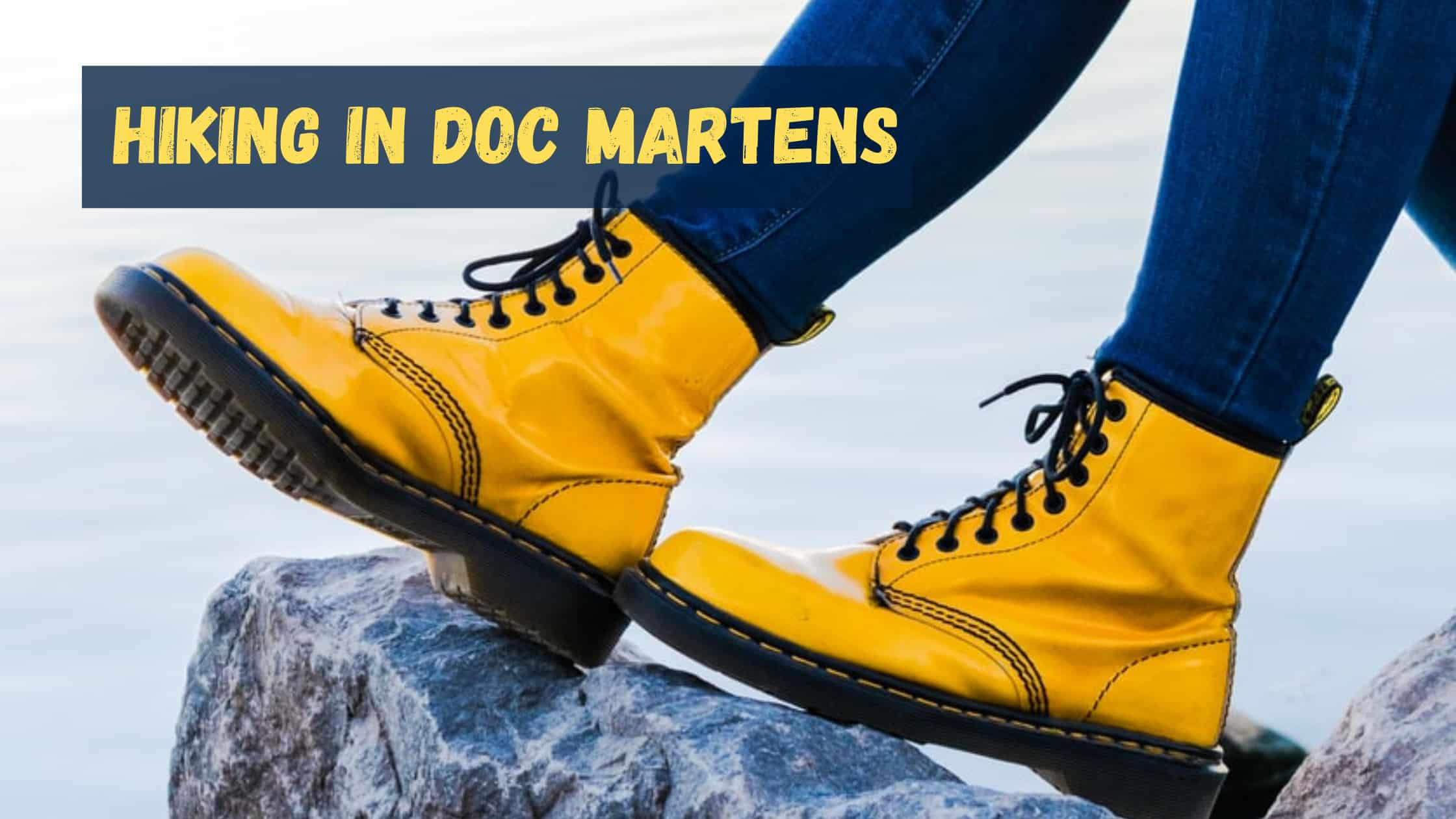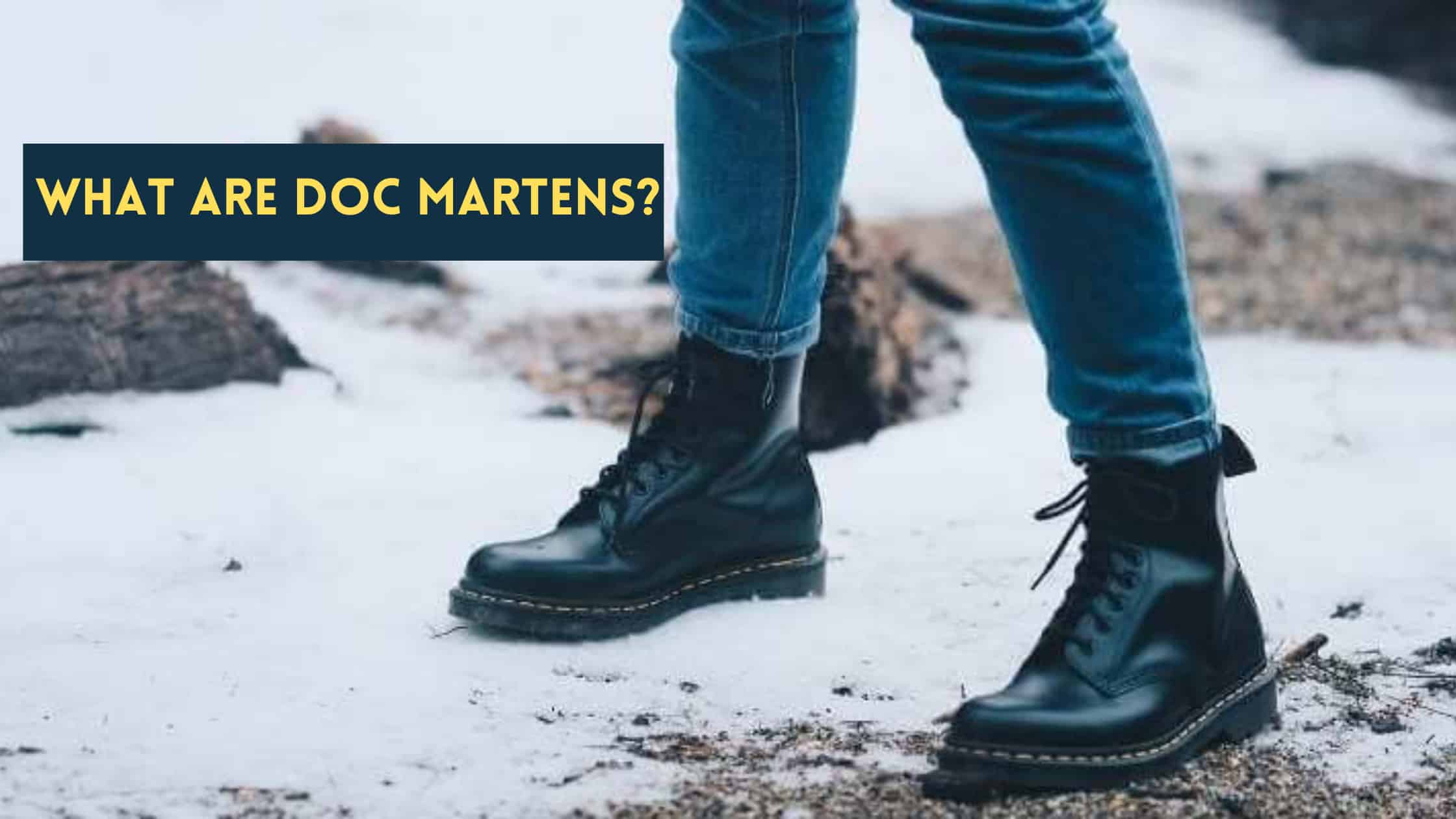Hiking in Doc Martens
If you’re a casual hiker who has yet to invest in proper comfortable hiking boots, it can be tempting to throw on whatever is laid out in your doorway. Apart from sneakers, the obvious substitute seems to be some form of boots.
For many people, this means Doc Martens. Sturdy, comfortable, and cool – they’re a great staple that offers functionality and style.
But can you hike in Doc Martens? Technically, yes. Hiking in Doc Martens is possible.
Do we recommend hiking in Doc Martens?
No. Doc Martens are not designed for hiking, and should only be used if you don’t have any other options. While certain models may be hiking boot-inspired, they’re designed for urban terrain.
What Are Doc Martens?
A product that emerged out of a need for therapeutic footwear, Doc Martens has since become an iconic brand among diverse social groups.
The sleek leather, laced-up boots were especially popular among rebels and non-conformists, so much that people don’t realize it was originally designed as modest work boots.
When D. Klaus Maertens first stitched together an air-cushioned sole and combined it with a sturdy, leather exterior, he intended the shoes to service workers and gig-performers.
Today, Doc Martens are featured in various styles – oxford shoes, platform boots, casual sandals, Mary Janes, and more. They’re built for the consummate urban worker.
Doc Martens doesn’t market boots for hiking, but that’s not to say that they haven’t been inspired by hiking boots. Certain ankle boots carry hiking boot elements such as a padded collar and double seams along with the laces.
However, it’s important to make a distinction between actual hiking boots and hiking-aesthetic boots.
Can You Hike in Doc Martens?
While the majority of the people, myself included, generally avoid wearing Doc Martens on hikes – what should you do if the only footwear you have is Doc Martens?
Doc Martens aren’t the worst option for hiking. They do offer comfortable soles, leather support, and sturdy construction. A simple walk through the woods is most likely fine if your Docs are already broken in.
However, we don’t recommend wearing them overnight or on a long trek on rugged grounds.
Let’s take a closer look at whether Doc Martens meet the basic criteria for hiking shoes.
Durability
Good hiking shoes require a high level of durability, especially for uneven terrain and extreme weather conditions. In this aspect, Doc Martens make great shoes.
Durable and built to last; they’re made of tough and unforgiving leather to protect your feet. Some models even come with steel toes to offer additional protection.
Flexibility
Do keep in mind, however, that durability has to be balanced out with flexibility. The more feet-protective Doc Martens models are a lot less flexible, not suitable for strenuous hikes. These shoes won’t roll with your moments, instead of causing more strain in the feet muscles.
Support
As any hiker knows, your hiking shoes are only as good as their support. Arch, heel, ankle – by conforming to the shape of your foot, it both reduces friction and keeps your feet balanced.
Doc Martens are designed with good arch support; the air-cushioned insole is ideal even for those with low arches. However, the roomy fit enables your foot to slip and slide, increasing the risk of sprains caused by loose ankles. The high tops are also restrictive, versus being supportive.
Comfort & Breathability
Comfort is the key criteria in good hiking shoes. Apart from comfortable fit and flexible material, high breathability is what makes your shoes comfortable. You want shoes that keep your feet cool and dry, especially on longer hikes.
Unfortunately, Doc Martens takes a long time to break in due to hard leather. You’re likely to develop blisters when it’s still new, and the high tops can result in abrasions.
Most importantly, the leather uppers are not very breathable. Your feet will be sweating the entire time, leading to prolonged discomfort.
Functionality
Are your shoes appropriate for the terrain? Is it fashionable or practical?
Doc Martens are famous for their versatility, easily transitioning between indoor and outdoor settings. As a work boot, it’s extremely functional. Unembellished, the sleek exterior means minimal risk of snags.
Fitted with a flexible, slip-and-puncture-resistant outsole, it provides a measure of security on rugged terrain.
On the other hand, it’s heavier than your regular hiking boot, wearing on your muscles. It also lacks waterproofing; you have to treat it yourself or wear it only on sunny days.
Steel toe caps are solid protection against heavy objects but don’t allow your toes to bend when climbing inclines. The PVC soles are good against oil and fats but don’t necessarily offer enough traction on rocky or sandy grounds.
You can get away with wearing Doc Martens for short and easy hikes, but we don’t recommend them over uneven ground and long trails. Durability isn’t the only factor that matters.
Any shoe you wear for hiking has to support the arch and ankle, offer high breathability and terrain-appropriate features.
How to Stay Comfortable and Safe When Hiking in Doc Martens
If you have to hike in Doc Martens, there are a few precautions you can take to minimize risks and injury:
- Limit your hike to smooth terrain and short duration.
- Make sure your Doc Martens are completely broken in! This applies to any shoes you may wear on a hike; you won’t want pinched toes, sore arches, and blisters.
- The only Docs you should be wearing on a hike is a pair molded to your feet. Extra space means sliding movements, leading to chafing and ankle sprains.
- Wear socks that extend above the boot to provide extra support and prevent rubbing. The tough leather rim can feel abrasive over the skin when you’re sweating especially.
- If necessary, layer with another pair of socks for extra padding and insulation.
- Waterproof them if necessary, especially if you’re walking through snow.
How to Break In Your Doc Martens
To prime your Doc Martens for a hike, go through this checklist.
- Size them properly. If your Docs are slightly loose and you’re stuck between sizes, round down instead of up.
- Cycle your wearing by starting with 10-minute walks around the house. Take them off once it starts hurting. Do this as often as possible but be patient.
- Figure out where your Docs need most work – they’re usually stiffest around the heel. Protect those areas from blisters with bandages or thick socks. You might also want to remove the insoles at first.
- Use products that clean, protect, and soften the leather. After applying products with lanolin, coconut oil, or beeswax, heat up the tight areas with a hairdryer and put on your Docs until they cool. It’ll help stretch out the material.
- Wrap your Docs up in a towel; hammer at the heel and sole with a mallet to soften it up.
In Conclusion
Hiking in Doc Martens is definitely possible but we don’t recommend doing so. If possible, invest in a proper pair of hiking shoes.
Those with longer hikes on their bucket list should seek shoes with high breathability and a more flexible sole. Aim for something more lightweight too, especially on a longer hike.
Without ample ankle support, you invite sprains and other injuries. Tough heels and restrictive tops also lead to abrasions and blisters; not something you want on a long hike.
Remember to prioritize comfort over fashion when hiking!


